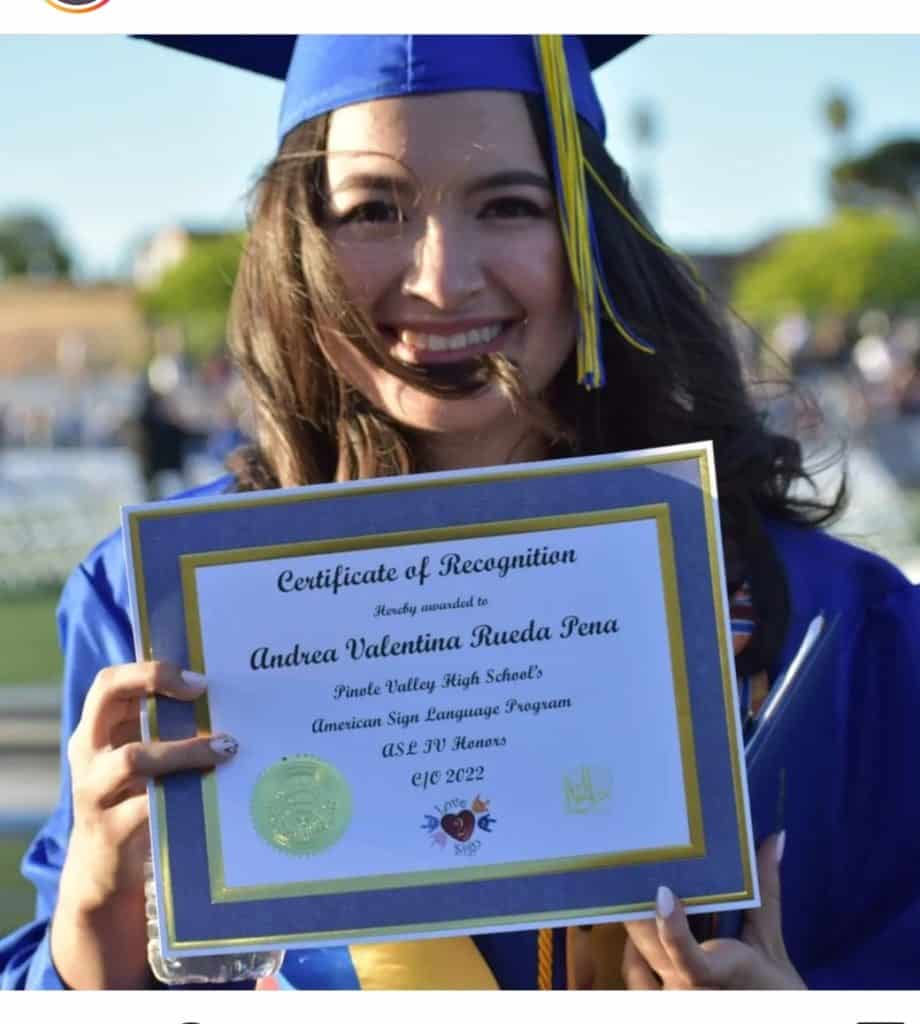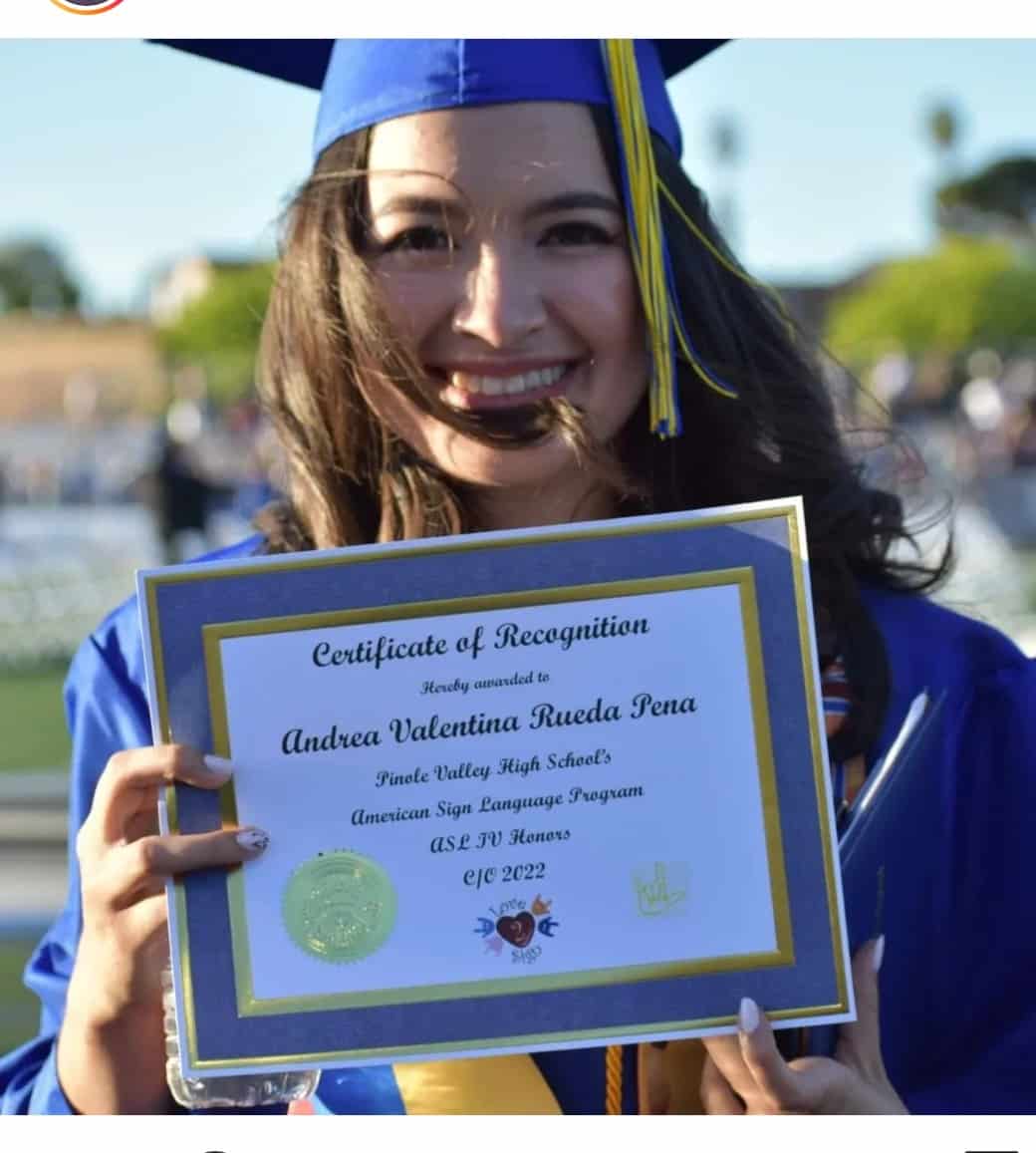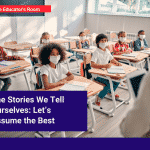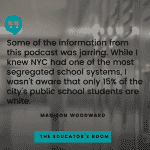Have you signed up for The Educator’s Room Daily Newsletter? Click here and support independent journalism!
In the summer of 2018 I learned that I would be meeting my first deaf[i] student in my American Sign Language (ASL) Class. After a decade of teaching ASL the majority of my students were hearing students. Only a handful were hard of hearing or Children of Deaf[ii] Adults (CODAs).
I was excited, nervous and eager to embark on this new journey. I was ready to finally experience daily interactions and communications with someone who was a native signer and one who lived in the Deaf Community we spent the entire school year studying. But it wasn’t quite as I expected.
My new deaf student was fluent in Spanish and Colombian Sign Language (CSL) only. I had to re-read the words again. My first deaf student not only signed but spoke a completely different language. She would learn ASL and English for the first time. She would be on a journey to become quadrilingual. This would be a new experience for us all.
Last week, Valentina graduated and was honored with the chance to speak at commencement. When I look back at our journey together I think of the many lessons I learned from our journey over the last four years. Valentina brought with her one of the most diverse identities I have ever encountered in a student: deaf, female, Latina, multi-language learner, and so much more I would come to discover over these four years.
Valentina taught me what it meant to face challenges head on with an innate intelligence, determination and perseverance I was blessed to witness first-hand. She challenged me to ensure I was true to my teaching philosophy to make every effort to meet each student where they were, provide differentiated education, while ensuring both rigor and cultural relevance in my curriculum. She was able to learn ASL, American Deaf Culture, history and literature. In return, she taught us about the treatment of deaf individuals in Colombia and many Colombian signs. This would prove to be, by far, the most unique and enlightening teaching experiences of my career.
I interviewed Valentina in July of 2020, and asked her follow up questions in early June of 2022. Here is the story of her journey in her own words.
What is your name and where were you born?
My name is Andrea Valentina Rueda Pena. I moved to America from Mosquera, Colombia in early September of 2018.
Were you born deaf?
My mother became seriously ill and had a high fever when she was pregnant. This caused me to be born deaf.
When did you get your first cochlear implant?
(Note: A cochlear implant is a small, complex electronic device that can help to provide a sense of sound to a person who is profoundly deaf or severely hard-of-hearing.)
I got my first cochlear implant when I was three years old and my second at eleven years old. The cochlear felt weird and awkward. I could only hear noises and sounds but no speech. In Colombia, they just implant every deaf person and do not encourage signing but focus on speech. They think cochlear implants will make things easier for deaf people, but no. I wish I never had a cochlear implant. It does not work for me. They told my mother I would never hear or speak, but I learned to speak with a lot of training and therapy. My teachers never signed before I was eleven. They and my hearing friends would talk and I would write things down. When hearing people learned a little fingerspelling, it was often difficult for the deaf as many did not know how to read or write in Spanish.
When you first came to America, what did you expect?
I didn’t know what to expect. I thought the other students in the school would be deaf as well. I didn’t realize I would be the only deaf person in the entire school. Whether it was people, culture or teachers, it was all so different, but I was excited to learn and get a better education. We first came to Orlando, visited Disneyworld for a week and then flew into San Francisco. We settled in El Sobrante, California. We were only supposed to stay for a year. I didn’t want to stay. I missed home. But my mother wanted better opportunities and a better future here. She wanted me to have new experiences and learn different languages.
When you first came to America, what were the differences between American and Colombian Deaf Cultures?
The biggest difference is that here in America, Deaf Culture is embraced and celebrated. I know I can become whatever I want in life. There are no barriers.

Tell me about some different things you might learn here that you would not in Colombia? I remember when we watched a movie and you told me you had never seen a deaf person drive before.
Opportunities are different for deaf people here. Deaf people cannot get a license in Colombia. But deaf people have great receptive skills so are naturally good drivers. It was strange to see people sign and drive at the same time. Now, I want to learn how to drive so that I can go and see my friends and drive myself to school. I am taking it slow and practicing.
How was it visiting the Deaf school (California School for the Deaf, Fremont)?
I was like “wow”! They had art and other things where they could be creative, but I did not want to go there. I would miss the teachers and friends I made here.
Did you prefer in person or online learning?
Definitely in person. I did not feel comfortable on the Internet. And with masks, I couldn’t see anyone’s facial expressions or read any lips. Unless they signed, it was very difficult. I miss seeing faces.
Do you feel like you are quadrilingual in ASL, English, Spanish and CSL?
I honestly do not think that I am quadrilingual yet. I still have a lot to learn, even in Spanish and CSL.
What’s the biggest difference between CSL and ASL?
ASL is a lot easier because it seems condensed, shorter but full of expressions. CSL has a lot more variety, but I love them both. Sign language makes things easier to communicate with Deaf people from around the world.
Why should people learn sign language?
The biggest reason to learn ASL is to open more communication between deaf and hearing people and to make sure deaf people are included in all conversations.
What do you want to do in the future?
At first, due to my love for animals I wanted to be a veterinarian. I changed my mind because I do not want to go to school for so long and did not like the idea of having to do surgery. Now, I want to do something in the arts like become a photographer. I also want to learn more ASL, English and Spanish as well. And of course I want to support Deaf individuals and be involved with the Deaf community.
Valentina was selected to give one of the graduation speeches for the class of 2022. Here is a portion of her speech.
Being the only deaf person in the entire school was hard but I had teachers, an interpreter, and I was able to make friends. Learning both English and ASL at the same time, I need to use Google Translate to help. I also wanted to immerse myself in and learn this new American Deaf Culture that was so different from my experience in Colombia. I was able to go on field trips to the School of the Deaf in Fremont and the Deaf Expo in Pleasanton. I met Deaf model Nyle Dimarco and Deaf dancer Antoine Hunter. I learned how to interpret songs from Spanish to English to ASL.
I want to thank Pinole Valley for educating me and giving me these experiences. Thanks to my family for supporting me all my life. I would also like to thank my teacher Ms. Lamons, tutor Ms. Richards and Interpreter Ms. Melvi because I know they will always be there to continue to support me. To the class of 2022, I wish you all the best for your futures.
As I read her graduation speech, I looked back on our journey together: exploring, learning and experiencing so much together. I think about how anxious I was at the beginning, and reflect on how much I have grown as a teacher as a result. I have learned so much more about the beautiful diversity in Deaf Cultures and sign language systems from around the world than I could have ever studied in a book. As educators, we are often faced with unfamiliar experiences like these, but these four years reminded me of the beauty in embracing new and exciting challenges.
Thank you, Valentina! I am so blessed to have had you as my first deaf student! Your incredible talent, creative spirit, and contagious smile are memories that have left an imprint on my educational career that will last a lifetime.
[i] With the rise of Deaf Studies in the 1970s, the usage the capitalization of (D)eaf became commonly used in order to distinguish between those who identify as belonging to a cultural and linguistic minority, in contrast to “(d)eaf”, which refers to an audiological condition. Some authors have opted to use the combined “d/Deaf” as a more inclusive term. – Gallaudet University, ASL Connect
Editor’s Note: If you enjoyed this article, please become a Patreon supporter by clicking here.







